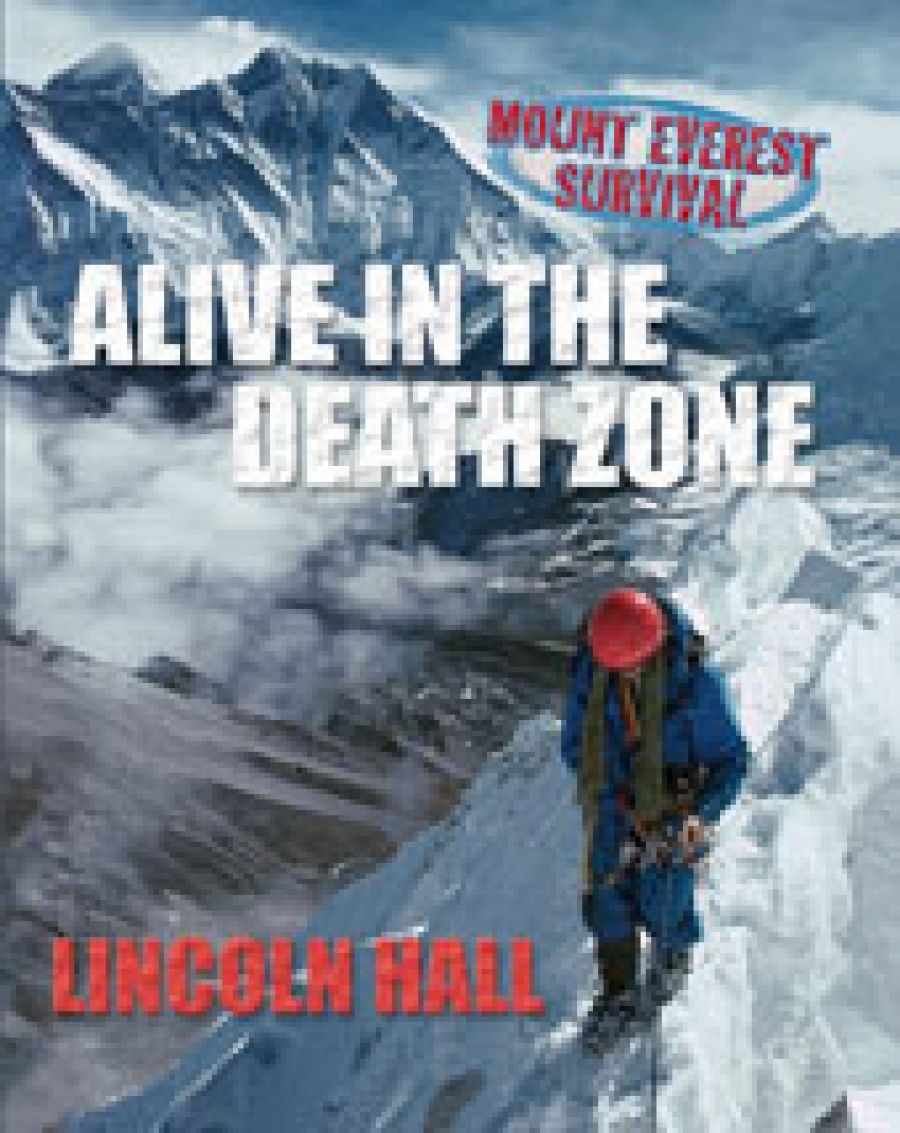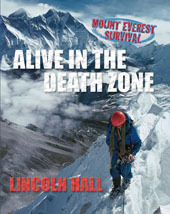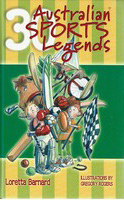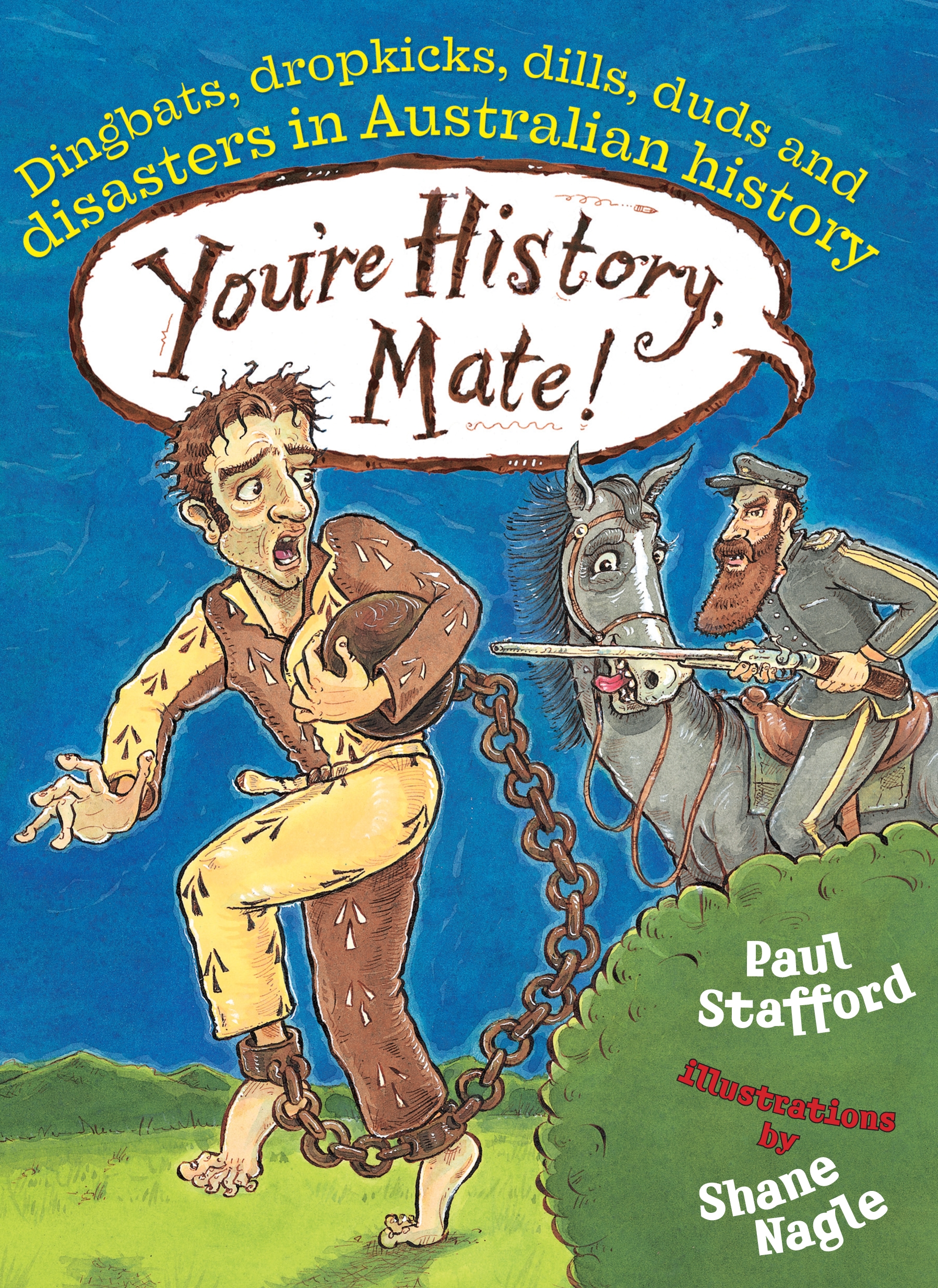
- Free Article: No
- Contents Category: Children's Non-Fiction
- Custom Article Title: Mike Shuttleworth reviews four children's non-fiction books
- Review Article: Yes
- Article Title: History waits
- Online Only: No
- Custom Highlight Text:
As I sat down to write this review, two news stories jostled for prominence on the ABC’s website. One was the unfolding story of two brothers who were trapped on Mt Cook, New Zealand’s highest mountain. Only one brother would come back (the other fell 500 metres to his death). Lincoln Hall would understand what the brothers went through. Hall is an Australian mountaineer who was, famously or infamously, left for dead at 8700 metres on Mt Everest. Having made the summit, Hall was heading back down with sherpas when he was struck down by an oedema, a brain malfunction caused by oxygen deprivation. His body gave out. Without a pulse or any sign of life, Hall was abandoned on a rocky ledge. (Ten days earlier, an English climber had been left to die on the mountain as others trekked past him. Hall was luckier, but both these events sparked condemnation, including from Sir Edmund Hillary.)
- Book 1 Title: Alive in the Death Zone
- Book 1 Subtitle: Mount Everest Survival
- Book 1 Biblio: Random House, $29.95 hb, 108 pp
- Book 1 Cover Small (400 x 600):

- Book 1 Cover (800 x 1200):

- Book 2 Title: 30 Australian Sports Legends
- Book 2 Biblio: Random House, $19.95 hb, 192 pp
- Book 2 Cover Small (400 x 600):

- Book 2 Cover (800 x 1200):

- Book 3 Title: You're History, Mate!
- Book 3 Subtitle: Dingbats, Dropkicks, Dills, Duds and Disasters in Australian History
- Book 3 Biblio: Random House, $14.95 pb, 220 pp
- Book 3 Cover Small (400 x 600):

- Book 3 Cover (800 x 1200):

Somehow Hall endured the long night, ‘I imagine you are surprised to see me,’ was how Hall greeted climbers who found him the next morning. Alive in the Death Zone: Mount Everest Survival (Random House, $29.95 hb, 108 pp) is the account of this near-fatal climb. It is also something of an autobiography, since it synoptically covers his development as a climber. Clearly, rock climbing and mountaineering bit him hard: his life is dedicated to climbing. The book provides tasty nuggets of detail about the equipment, preparation and strategy that goes into climbing Everest, and offers affection to the tireless sherpas. The bizarre effects of oxygen deprivation are intensely portrayed, too.
Complementing Hall’s story are vivid full-colour photographs, often stretching over two pages. These images, many taken by Hall himself, deliver the ‘wow factor’ that the text sometimes lacks. I am still none the wiser as to why a parent with young children would consider climbing Mt Everest a good idea, or why the loss of the first knuckle on every finger save your thumb is considered worthwhile given the view from the summit. But I have a good idea of what to pack, and what lies ahead, should the urge ever strike.
Rock climbing is one of the few sports in Loretta Barnard’s 30 Australian Sports Legends (illus. Gregory Rogers, Random House, $19.95 hb, 192 pp) that she does not investigate in her jog through thirty popular sports. The alphabetical arrangement, beginning with AFL through to tennis, takes in familiar topics including cricket, hockey, horse racing, motorbikes, soccer, and surfing. Each chapter is built around a biographical sketch of a leading athlete, and augmented with key rules and quirky stories. (Though she errs in counting Shane Warne as one of three cricketers named Australian of the Year. That would be Steve Waugh.) Women are reasonably well represented across a range of sports, including Karrie Webb, Layne Beachley, Evonne Cawley and Cathy Freeman. The book also maintains a sense of humour, with the code’s low moments noted in an ‘oops’ section. Amusing detours of novelty sports and animal races (including lizards, camels, and goats) suggest that sports are sometimes just good fun. Short sections on training and diet, a list of summer and winter Olympic sports, useful websites, and an index round out the encounter.
‘Poverty often meant sleeping in ditches with a sheet of tin for a doona and eating roadkill with newspaper sauce.’ Such was life in early Australia, at least as told in the colourful and occasionally fanciful vernacular of Paul Stafford in You’re History, Mate!: Dingbats, Dropkicks, Dills, Duds and Disasters in Australian History (illus. Shane Nagle, Random House, $14.95 pb, 220 pp). Politicians, bushrangers, settlers, and eccentrics make up the census. Stafford takes his cue from Bill Wannan as much as the popular and influential Horrible Histories series. He mixes fact and humour with rough measure and doesn’t always let truth get in the way of a good story. Of Ben Boyd, a pioneer businessman turned conman who died mysteriously in the Solomon Islands, Stafford writes: ‘On his way back Boyd stopped for some takeaway at the Solomon Islands . . . Somebody recognised Boyd, reached for The Cannibal’s Cookbook and rang the dinner gong.’ It’s snappy and it’s funny, but how wise is it to suggest that cannibals populated the Solomon Islands? John Macarthur cops this pasting:
If Macarthur lived today, he would be the bent cop who controls every illegal racket operating on his turf – the one who quits his job and starts his own street gang when he decides the heat is on and people are getting too suspicious ... Macarthur was the original white collar criminal.
While he may find more inspiration in H.G. Nelson than, say, Geoffrey Blainey, Stafford is rarely dull. You’re History, Mate walks a fine line, sometimes with sharp wit. If nothing else, Stafford invites readers to take an irreverent approach to history.
John Nicholson’s craftsmanship as a writer and illustrator has been bringing history to life for nearly two decades. Steam, Steel and Speed: Transport, Trade and Travel in Australia 1850s–1920s (Allen & Unwin, $29.95 hb, 32 pp) is the fourth book in the award-winning Trade, Travel and Transport series. It maintains the high standards of the previous three with patient scholarship, nuanced illustrations, and tightly focused scenes of Australian life. There is very little fanfare in the way Nicholson crafts his books – no glossy photographs, no gags, scarcely a fact box. The use of white space is judicious, the text is never crowded. But a great deal of skill goes into the design, and there is much pleasure and knowledge to be found here.
Steam, Steel and Speed opens in 1863 on board a burning paddle-steamer, with a frightened captain jumping into the Murray River at Chowilla Bend. Later in the book, we revisit the paddle steamers and their role in the spread of agriculture, before they were brushed aside by rail networks fanning out from Melbourne, Sydney, and Adelaide. Nicholson also notes that the spread of steam-driven machinery was relatively rapid in Australia due to the shortage of labour, much of it attracted to the gold diggings.
Steam, Steel and Speed depicts in word and image how and why the steam engine drove economic development in nineteenth-century Australia. Technology of the era is shown with precise, though never fussy, illustrations: just how a steam engine works, a Morse code transmitter, and the architecture that came with steam technology. A bluestone bridge at Riddell’s Creek, Victoria and the black cavernous mouth of Rockwood Cemetery railway station (last stop on the line) show his touch for architecture. Nicholson’s textured pencil and pen drawings evoke the era but resist nostalgia.
Although Nicholson never uses the word, the book perfectly illustrates the globalised reach of the Industrial Revolution, since much of the wool, transported by paddle steamer and steam train, eventually finds its way back to the mills of England. All of this economic progress comes at a cost; that cost is largely paid by the environment, with the clearing of forests to feed the hunger of industry. The Kalgoorlie goldfields, for example, alone consumed 12,000 tonnes of timber every day. (Earlier volumes have detailed the decimation of redgum forests.) The book concludes by reminding the reader that the age of steam is still with us. ‘Perhaps the least obvious but most important example is something we use every day. About eighty-five per cent of Australia’s electricity is still generated by coalfired steam turbines. Maybe that’s about to change too.’
The other news story jostling for the main headline is of course the environment. Prime Minister Kevin Rudd announces a speed-up of spending on renewable energy. As for the anticipated announcement of reductions in carbon emission, history waits.


Comments powered by CComment